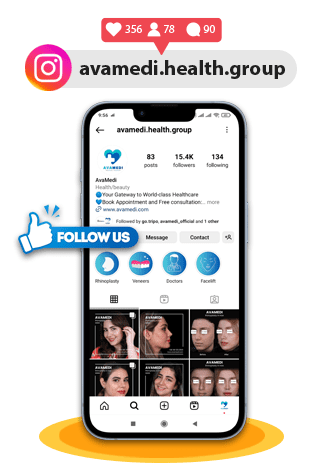The Asian Nose is a term commonly used to refer to the nasal features found among people of East Asian, Southeast Asian, and some South Asian descent. The shape and structure of the Asian nose vary significantly across regions, but specific defining characteristics distinguish it from other ethnic groups. Over time, many people have sought aesthetic modifications to this feature, increasing the demand for specialized rhinoplasty (nose surgery) procedures catering to Asian patients.
In this comprehensive blog post, we will explore the Asian nose’s defining characteristics, its popular procedures, and the specific techniques surgeons use to enhance its appearance.
What Is an Asian Nose?
The Asian nose, while not uniform, tends to have certain common traits that differentiate it from Caucasian or African noses. These characteristics can vary between East Asian, Southeast Asian, and South Asian individuals, but often include:
- Lower nasal bridge: Many Asians have a lower or flatter nasal bridge, which creates a smoother and less prominent nose profile.
- Wider nostrils: Many Asians have wider nostrils, typically resulting in a broader base.
- Shorter nose length: The nose length from the tip to the base is often shorter than in other ethnic groups.
- Thicker skin: Asian noses like tend to have thicker skin, especially at the nasal tip, making defining the tip more challenging during surgery.
- Lesser nasal tip projection: The nasal tip tends to project less outward from the face, giving it a flatter appearance.
While these features are part of natural diversity, some people seek to modify their noses to create a more defined look or align with specific aesthetic goals. This desire has spurred the popularity of the Asian rhinoplasty, a cosmetic surgical procedure that tailors nasal enhancements to the unique anatomy of Asian patients.

Asian Nose Job (Asian Rhinoplasty)
An Asian nose job or Asian rhinoplasty is a specialized form of rhinoplasty designed to address the unique structural and aesthetic characteristics of the Asian nose. Unlike traditional rhinoplasty, which may focus on reducing the size of the nose, Asian rhinoplasty often emphasizes augmenting certain areas, like the nasal bridge and tip, to create a more defined and balanced profile.
Asian Rhinoplasty Cost
The cost of an Asian rhinoplasty varies depending on several factors, such as the surgery’s location, the surgeon’s experience and reputation, the procedure’s complexity, and the type of materials used (e.g., synthetic implants versus cartilage grafts).
- In the United States, the price for an Asian rhinoplasty can range from $5,000 to $15,000.
- South Korea, known for its advanced cosmetic surgery industry, has generally more affordable costs, averaging between $3,000 and $10,000.
- Iran and Turkey also offer high-quality rhinoplasty options, with costs falling between $2,000 to $5,000.
It’s important to note that while price is a factor, the surgeon’s expertise and experience with Asian rhinoplasty should be a top consideration.
Asian Rhinoplasty Before and After
Asian rhinoplasty can result in significant aesthetic changes. Typically, patients seek:
- A more pronounced nasal bridge: Implants or cartilage grafts raise the nasal bridge, creating a more defined and balanced profile.
- Narrowing of the nostrils: This reduces the appearance of a broad base and provides a more refined look.
- Increased nasal tip projection: Surgeons often reshape the nasal tip to project more prominently, giving the nose a more pointed or defined appearance.
- Smoother nose shape: In some cases, smoothing out any bumps or irregularities in the nasal structure enhances the overall look.
Before-and-after photos often show a striking difference, with more symmetry and definition added to the nose. Many patients report greater facial harmony after undergoing the procedure.
Best Asian Rhinoplasty Surgeons
Choosing the right surgeon for an Asian rhinoplasty is crucial for achieving desirable results. Surgeons who specialize in Asian rhinoplasty are familiar with the unique anatomical features and have experience in delivering natural-looking outcomes.
Some renowned Asian rhinoplasty surgeons include:
- Dr. Charles Lee (United States): Known for his expertise in ethnic rhinoplasty, particularly in enhancing the Asian nose.
- Dr. Kim Byung-gun (South Korea): One of Asia’s most sought-after plastic surgeons, particularly famous for his work in rhinoplasty.
- Dr. Shahriyar Yahyavi (Iran): An expert in Asian rhinoplasty, he is recognized for providing natural results that respect each patient’s unique ethnic characteristics.
- Dr. Philip Young (United States): With a focus on ethnic facial plastic surgery, Dr. Young specializes in Asian rhinoplasty techniques.
It’s essential to choose a surgeon with the technical skills and an understanding of the patient’s cultural and aesthetic goals.
Asian Rhinoplasty Techniques
Several specialized techniques are used in Asian rhinoplasty to achieve the desired look. These techniques often involve augmenting, reshaping, and refining the nasal structure:
- Bridge augmentation involves using implants (usually silicone or Gore-Tex) or cartilage grafts (from the patient’s rib or ear) to increase the height of the nasal bridge, creating a more defined profile.
- Nasal tip refinement: Often necessary in Asian noses, which tend to have thicker skin and less tip projection. Surgeons may use cartilage grafting to provide more structure and definition to the tip.
- Alar base reduction: A standard procedure to narrow the width of the nostrils by excising small portions of tissue at the base of the nose. This gives the nose a more streamlined look.
- Non-surgical rhinoplasty: Using dermal fillers to temporarily augment the nasal bridge or tip, providing a non-invasive way to enhance the nose’s appearance.
Asian Nose Job in Iran
Iran has emerged as a global hub for rhinoplasty, often called the “nose job capital of the world.” This reputation extends beyond its borders, attracting patients from various regions, including Asia. The Asian nose job in Iran is gaining popularity due to the country’s highly skilled surgeons, affordable costs, and advanced surgical techniques. Iranian rhinoplasty surgeons are renowned for their expertise in ethnic rhinoplasty, which involves tailoring procedures to the unique anatomical characteristics of different ethnic groups, including Asian patients.
Asian rhinoplasty in Iran specifically addresses the distinctive features of the Asian nose, such as a low nasal bridge, wider nostrils, and a flatter tip. Iranian surgeons are skilled in enhancing these features while maintaining a natural and balanced appearance. The main focus of these procedures often includes bridge augmentation to create a more defined nasal profile and tip refinement to provide a more excellent definition, all while ensuring that the results harmonize with the patient’s facial structure.
Cost of an Asian nose job in Iran
The cost of an Asian nose job in Iran is significantly lower than in Western countries, making it an attractive option for international patients. The price typically ranges from $2,500 to $4,000, depending on the complexity of the surgery and the surgeon’s experience. This affordability, combined with the country’s high-quality medical services, has contributed to Iran’s rise as a leading destination for medical tourism, especially for cosmetic surgeries like rhinoplasty.
Asian Nose Features
As mentioned earlier, the Asian nose is known for certain distinct features. These features vary across different populations in Asia, but commonly include:
- Low or flat nasal bridge: Many East and Southeast Asians have flatter nasal bridges than Caucasians, resulting in a more subtle profile.
- Broad nostrils: The nostrils are wider, contributing to the nose’s broader appearance.
- Short nose length: Asian noses generally have a shorter length from the root of the nose (where it meets the forehead) to the tip.
- Bulbous tip: The nose tip is often rounder and less defined, which some patients seek to refine through rhinoplasty.
- Thick skin: Thicker skin can make it more challenging for surgeons to define the nasal tip, as it tends to mask acceptable changes to the cartilage.
These characteristics contribute to the unique beauty of Asian faces, but some individuals prefer alterations to align more with their aesthetic ideals.
Korean Nose
Korean noses, in particular, have gained attention due to the popularity of plastic surgery in South Korea. The country is renowned for its advanced cosmetic procedures and is often considered a global hub for rhinoplasty.
Korean Nose Job
The Korean nose job is a specialized type of rhinoplasty that addresses the standard features of Korean noses, such as a low nasal bridge and less prominent tip. The primary goal of Korean rhinoplasty is to enhance the nose while maintaining a natural look that harmonizes with the rest of the face.
Korean Nose Job Cost
In South Korea, the cost of a nose job varies depending on the complexity of the surgery, the surgeon’s reputation, and the clinic’s location. On average:
- Basic rhinoplasty procedures range from $3,000 to $7,000.
- More complex surgeries, such as cartilage grafting, can cost $8,000 to $12,000.
Despite the relatively high cost, South Korea remains a popular destination for cosmetic surgery due to the expertise of its surgeons and the high success rate of procedures.
Natural Korean Nose Job
A growing trend in South Korea is the natural Korean nose job. The results are subtle and enhance the nose without making it look overly done. The emphasis is on achieving harmony between the nose and the rest of the face rather than drastically altering the nose’s appearance.
The natural approach to rhinoplasty often uses the patient’s cartilage (rather than synthetic implants) to augment the nasal bridge and tip, resulting in a softer, more organic look. This technique is popular among patients who want to avoid an “operated” appearance and prefer a more understated enhancement.
Wide Asian Nose
One of the most common concerns for those seeking rhinoplasty is the wide Asian nose, characterized by a broad nasal base and wide nostrils. This feature is prevalent among Southeast Asians and some East Asians.
.
Flat Nose People
Another feature frequently addressed in Asian rhinoplasty is the flat nose, where the nasal bridge lacks projection, and the nose appears flatter against the face. People with flat noses may seek rhinoplasty to create a more pronounced nasal bridge, giving the face greater dimension and balance.
Non-Surgical Nose Job for Asians
For those hesitant to undergo surgery, there is an option known as the non-surgical nose job. This involves temporarily augmenting the nose without invasive surgery using dermal fillers, such as hyaluronic acid.
A non-surgical nose job is trendy among Asian patients looking to:
- Enhance the nasal bridge: Fillers can be injected to raise the bridge and create a more defined profile.
- Refine the tip: Fillers can add subtle definition to the nasal tip without requiring cartilage grafting or implants.
- Address minor asymmetry: A non-surgical approach can correct the nose’s appearance without major structural changes for patients with minor irregularities.
The results of a non-surgical nose job are temporary, typically lasting between 6 to 18 months, depending on the type of filler used. However, this procedure offers a low-risk, low-commitment option for those seeking subtle enhancements.
Conclusion
In conclusion, the Asian nose is unique in its structure and appearance, and those seeking rhinoplasty or non-surgical enhancements often have specific aesthetic goals that reflect their cultural and individual preferences. Whether it’s a surgical rhinoplasty or a non-invasive filler treatment, the growing popularity of cosmetic procedures for the Asian nose speaks to the diversity of beauty standards and the desire for personalized treatments that respect both form and function.
Source 1: The latest trends in Asian rhinoplasty
Source 2: NIH
Reviewed by Hesam.M (October 14th, 2024)






















